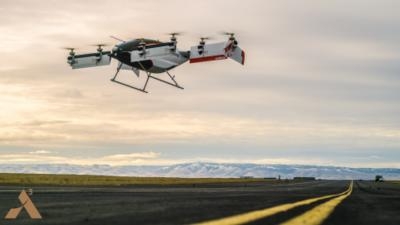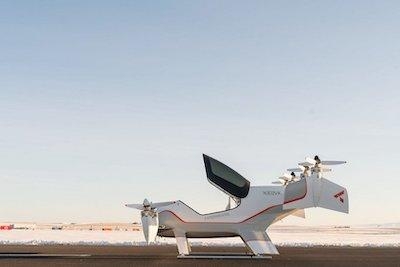How Urban Air Mobility Vehicles Are Helping To Lay The Groundwork For More Autonomous Flight
Self-piloting technologies are having a huge impact on mobility solutions—both on the ground and in the air. But the leap from automated to autonomous is still a work in progress. Although fully autonomous aircraft are still many years away, urban air mobility vehicles are proving to be an excellent option to start the roll-out of self-piloting aircraft operations.

Greater reliability, improved performance and reduced costs: the perceived benefits of automation have made it one of this century’s most significant industrial trends. In fact, automation in manufacturing has become so widespread that robots, artificial intelligence and machine learning are now an integral part of the manufacturing process.
In mobility, automation is also set to make a significant impact on how we move in the future. Automotive manufacturers around the world are exploring the potential of self-driving cars, which promise to drastically reduce vehicle accidents, improve road safety and free up valuable time.
While certain levels of automation are already available in many vehicles—such as cruise control, steering assistance and self-parking—it will be a number of years before self-driving cars hit the roads. This is, in part, because road systems are highly complex environments in which hazards abound—from other road users to pedestrians and debris.
The sky, however, is a very different story. Aircraft operate in a much sparser environment. Air hazards—such as other aircraft, birds, and drones—are rarely encountered compared to ground hazards, which are often minimised by applying safety means at landing and take-off sites. If a hazard is encountered, the aircraft can move in three dimensions to avoid it.
When viewed from the perspective of risk and impact, this vast difference in hazard density and response options suggests that autonomy in aviation faces a much different challenge in getting off the ground than its automotive counterparts.
Although sometimes used interchangeably, automation and autonomy are not synonymous. The difference can be summarised as follows:
- Automation refers to the ability of a system to control a vehicle, like autopilot or cruise control.
- Autonomy is the ability of a system to not only control a vehicle but respond to unexpected hazards.

Two very different paths can be taken to achieve a fully autonomous aircraft. Fall-back pilot: During development, a “fall-back,” or safety pilot is always on board to take control at any time, for any reason. As the autonomy system becomes more reliable, the fall-back pilot will eventually become redundant.
"Full autonomy from the beginning: Operating solely in constrained environments enables the autonomy system to be implemented from the very beginning for safe and extensive testing," said Arne Stoschek, Project Wayfinder, A^3 by Airbus. "In ‘autonomous’ flight, the aircraft has to be able to make decisions and react to unforeseen events without the pilot’s intervention."
Using the fall-back pilot enables the aircraft to become airborne more quickly, but it requires significant investment in systems that will, ultimately, not be needed. Starting with full autonomy eliminates the need for human-machine interfaces, but obtaining certification and public acceptance can be a challenge.
Some manufacturers, like Airbus, are already taking the latter option: new urban air mobility vehicles like Vahana have been designed to integrate self-piloting functionalities from the start. This is because flying taxi missions involve short, point-to-point flights along a restricted selection of routes using limited landing infrastructure, thus making urban air vehicles an ideal choice for testing self-piloting operations in aircraft. Although the technology is still not mature enough to transport passengers, autonomy in aircraft operations will undoubtedly be shaped by self-piloting, flying taxi demonstrators like Vahana.
(Images provided with Airbus news release and from file)
 ANN's Daily Aero-Term (11.16.25): NonApproach Control Tower
ANN's Daily Aero-Term (11.16.25): NonApproach Control Tower Aero-News: Quote of the Day (11.16.25)
Aero-News: Quote of the Day (11.16.25) ANN's Daily Aero-Linx (11.16.25)
ANN's Daily Aero-Linx (11.16.25) NTSB Final Report: Vans Aircraft Inc RV-12
NTSB Final Report: Vans Aircraft Inc RV-12 ANN FAQ: How Do I Become A News Spy?
ANN FAQ: How Do I Become A News Spy?




